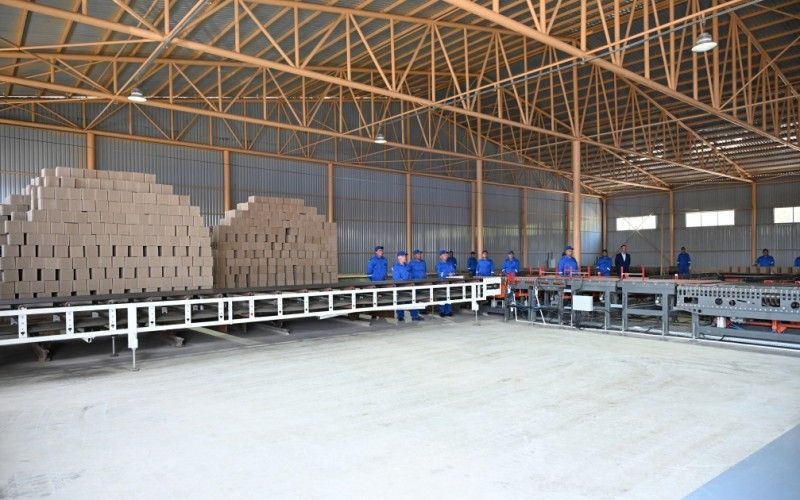Report on the Development of Thermal Power Plants in Kazakhstan and Alignment with Sustainable Development Goals
1.0 Project Overview and Status
The Ministry of Energy of Kazakhstan has confirmed that negotiations are ongoing with the Russian Federation concerning the financing for the construction of three new thermal power plants (TPPs). These critical infrastructure projects are slated for development in the northern cities of Kokshetau, Semey, and Ust-Kamenogorsk. An intergovernmental agreement for the construction was signed in 2024, and the ratification process is currently proceeding through the Parliament of Kazakhstan.
2.0 Financial Negotiations and Contingency Planning
The bilateral agreement includes a provision for a concessional export loan from Russia to facilitate the projects. However, final terms for this financing are still under discussion. Key developments include:
- The strategic importance of the projects has prompted Kazakhstan to independently commence construction of the Kokshetau TPP while negotiations continue.
- The Ministry of Energy has indicated that should a definitive financing agreement with Russia not be reached, it is prepared to explore alternative funding mechanisms.
- This approach underscores a commitment to implementing the projects independently to safeguard national interests and energy security.
Alignment with Sustainable Development Goals (SDGs)
3.0 SDG 7: Affordable and Clean Energy
The construction of these TPPs directly addresses Target 7.1, which aims to ensure universal access to affordable, reliable, and modern energy services. By enhancing the electricity generation capacity in its northern regions, Kazakhstan is working to guarantee a stable energy supply, which is fundamental for both residential and industrial consumers. While TPPs present challenges to Target 7.2 (increasing the share of renewable energy), their development with modern technology can be seen as a transitional step to ensure grid stability and energy security, a prerequisite for a broader energy transition.
4.0 SDG 9: Industry, Innovation, and Infrastructure
This initiative is a significant investment in resilient infrastructure, a core component of SDG 9. The power plants will provide the foundational energy infrastructure necessary to support industrial growth, attract investment, and foster innovation in the regions of Kokshetau, Semey, and Ust-Kamenogorsk. Reliable power is essential for building and maintaining robust industrial sectors and enhancing economic productivity.
5.0 SDG 8 & SDG 11: Decent Work, Economic Growth, and Sustainable Communities
The development of the three TPPs contributes to multiple interconnected goals:
- SDG 8 (Decent Work and Economic Growth): The construction and subsequent operation of the plants are expected to generate significant local employment opportunities, stimulating economic growth in the host cities.
- SDG 11 (Sustainable Cities and Communities): A reliable energy supply is critical for the functioning of modern cities. These TPPs will enhance the sustainability and resilience of urban communities in northern Kazakhstan by ensuring consistent power for housing, public services, and local businesses.
6.0 SDG 17: Partnerships for the Goals
The ongoing negotiations between Kazakhstan and Russia exemplify SDG 17, which encourages and promotes effective public, public-private, and civil society partnerships. The bilateral agreement, focused on financing and technology transfer for critical infrastructure, represents a cross-border collaboration aimed at achieving shared development objectives. Kazakhstan’s proactive stance on seeking alternative funding also demonstrates a commitment to leveraging diverse partnerships to achieve its national goals.
1. Which SDGs are addressed or connected to the issues highlighted in the article?
The article on Kazakhstan’s construction of thermal power plants (TPPs) with potential financing from Russia touches upon several Sustainable Development Goals (SDGs). The primary connections are to energy, infrastructure, and international partnerships.
-
SDG 7: Affordable and Clean Energy
This goal is central to the article, as the construction of three new thermal power plants in Kokshetau, Semey, and Ust-Kamenogorsk is a direct effort to increase the country’s energy generation capacity. The project’s “strategic importance” mentioned in the article highlights the need to ensure a reliable energy supply for the country.
-
SDG 9: Industry, Innovation and Infrastructure
The development of TPPs is a major infrastructure project. This SDG focuses on building resilient infrastructure, promoting inclusive and sustainable industrialization, and fostering innovation. The article details the “construction of the power plants,” which is a fundamental component of developing quality and reliable infrastructure to support economic activity and public well-being.
-
SDG 17: Partnerships for the Goals
This goal is explicitly addressed through the bilateral relationship between Kazakhstan and Russia. The article states that an “agreement on the construction of the power plants…was signed in 2024” and that this agreement includes the provision of a “concessional (subsidized) export loan from Russia to Kazakhstan.” This represents a financial and technical partnership between two countries to achieve a development objective.
2. What specific targets under those SDGs can be identified based on the article’s content?
Based on the information provided, several specific targets can be identified:
-
SDG 7: Affordable and Clean Energy
- Target 7.1: “By 2030, ensure universal access to affordable, reliable and modern energy services.” The construction of three new TPPs is a direct measure to enhance the reliability of Kazakhstan’s energy supply, which is a key aspect of this target. The project’s description as being of “strategic importance” underscores its role in ensuring energy security.
- Target 7.a: “By 2030, enhance international cooperation to facilitate access to clean energy research and technology…and promote investment in energy infrastructure…” The article’s focus on the “concessional (subsidized) export loan from Russia” for the construction of energy infrastructure directly aligns with the promotion of international investment in this sector.
-
SDG 9: Industry, Innovation and Infrastructure
- Target 9.1: “Develop quality, reliable, sustainable and resilient infrastructure…to support economic development and human well-being…” The TPPs are critical energy infrastructure projects aimed at providing a reliable power source for the northern part of Kazakhstan, thereby supporting both economic activities and the well-being of the population.
-
SDG 17: Partnerships for the Goals
- Target 17.3: “Mobilize additional financial resources for developing countries from multiple sources.” The negotiation for an “export loan from Russia” is a clear example of mobilizing international financial resources to fund a major domestic infrastructure project.
- Target 17.17: “Encourage and promote effective public, public-private and civil society partnerships…” The “agreement…signed in 2024” between Kazakhstan and Russia is a form of a public-public partnership aimed at achieving a common goal of infrastructure development.
3. Are there any indicators mentioned or implied in the article that can be used to measure progress towards the identified targets?
The article implies several indicators that can be used to track progress, even if it does not use the official SDG indicator terminology.
- For Target 7.1 and 9.1: The primary indicator is the number of new power plants under construction or completed. The article specifies “three thermal power plants (TPPs) to be built in…Kokshetau, Semey, and Ust-Kamenogorsk.” Progress can be measured by the status of these construction projects.
- For Target 7.a and 17.3: A key indicator is the amount of international financial flow for infrastructure development. The article explicitly mentions the “concessional (subsidized) export loan from Russia.” The finalization and disbursement of this loan would be a measurable indicator of progress. The article notes that “discussions on the financial terms are still ongoing,” indicating this is a key metric being tracked.
- For Target 17.17: The indicator is the existence and implementation of a bilateral agreement. The article confirms that an “agreement…was signed in 2024” and that the “ratification process is currently underway.” The successful ratification and execution of this agreement serve as a concrete indicator of a functional partnership.
4. Create a table with three columns titled ‘SDGs, Targets and Indicators” to present the findings from analyzing the article.
| SDGs | Targets | Indicators (Identified or Implied in the Article) |
|---|---|---|
| SDG 7: Affordable and Clean Energy | 7.1: Ensure universal access to affordable, reliable and modern energy services.
7.a: Enhance international cooperation…and promote investment in energy infrastructure. |
– Construction of three new TPPs to increase energy reliability.
– The provision of a “concessional (subsidized) export loan from Russia” for energy infrastructure. |
| SDG 9: Industry, Innovation and Infrastructure | 9.1: Develop quality, reliable, sustainable and resilient infrastructure. | – The construction of three large-scale power plants in Kokshetau, Semey, and Ust-Kamenogorsk. |
| SDG 17: Partnerships for the Goals | 17.3: Mobilize additional financial resources for developing countries.
17.17: Encourage and promote effective public partnerships. |
– Ongoing negotiations for an export loan from Russia to finance the projects.
– The bilateral “agreement…signed in 2024” between Kazakhstan and Russia for the construction of the TPPs. |
Source: azernews.az







